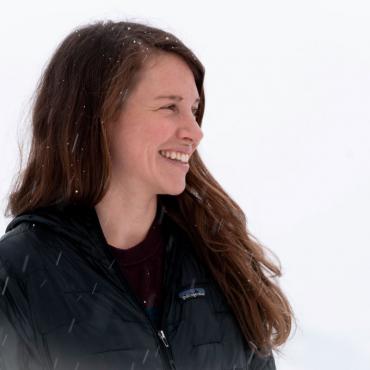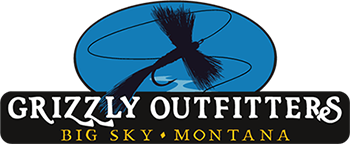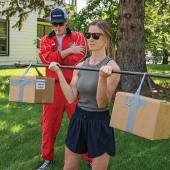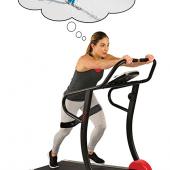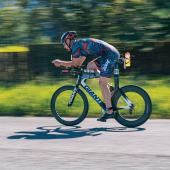Don't Fall Back
Training tips from local pros.
As autumn takes hold in southwest Montana, our motivation for training in the mountains tends to match the season: shorter days, shorter runs and rides; less warm air and sunshine, less fire in the belly for those big, long objectives. The world seems to slow down a little, and we fall in step with the more relaxed pace. Which, of course, is all perfectly natural.
Except this: winter’s coming, and the more fit we are now, the better off we’ll be. Skiing, ice climbing, fatbiking, playing hockey… whatever one’s outdoor inclination, it requires strength and stamina. And that requires motivation, which is much harder to come by on those dark mornings with a chill in the air and a skiff of snow in the mountains.
But all is not lost. Help is available, in the form of professional motivators who help people sustain their drive regardless of the circumstances. We talked with three of them, from three different fields—triathlon, rock climbing, and CrossFit—to help you (and us) find the mettle to keep digging deep in the mountains. These local coaches provide specific drills and exercises, both physical and mental, to structure fall workouts for success. We talk micro-quits, mental tenacity, sticky feet, endurance, fun, and how to keep workouts fresh.
The Triathlete Coach
Vanessa Foerster is a competitive triathlete who focuses on the mindset aspect of training and racing as she helps clients prepare for the Ironman World Championship in Kona, Hawaii. She loves collapsible flasks and dark chocolate, and views endurance sports as a means of positive transformation. Her training philosophy is to lean into the discomfort in order to level up.
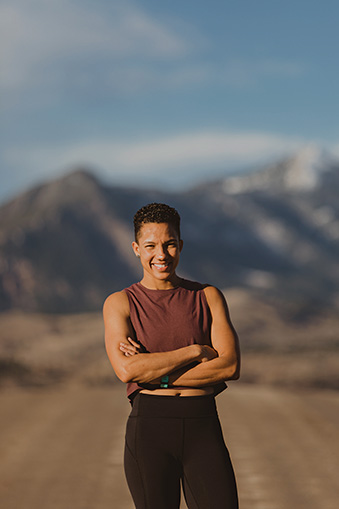
O/B: How long have you been coaching in Bozeman? Where’d you move from?
VF: I started my coaching business here in Bozeman about two years ago, after moving here from Salt Lake City.
O/B: On your Instagram, you’ve raised the question of how often we’re practicing mental endurance. Can you say more?
VF: As any endurance athlete can attest, success in our sports is not solely built upon our ability to complete the physical task, but also upon being mentally prepared. The work I do as a coach teaches athletes to increase their mental capacity so that they can achieve more.
O/B: How can we practice this skill?
VF: There are two mental drills for any athlete that, when practiced regularly, will greatly improve your mental game.
1. Lean into resistance. Notice when you don’t want to do something—when your natural tendency is to quit or do something else. For example, if you’re on a run, and you planned for three eight-minute threshold intervals, but you don’t feel like doing the intervals, you do an aerobic run instead. This is an example of a micro-quit. You didn’t quit the run altogether, but you also didn’t stay committed to what was planned for the training session. This is an opportunity to lean into that resistance, instead of shying away. Not wanting to do a training session is actually the best reason for completing it.
2. Learn from your emotions. We do everything in our power to avoid negative emotions. Our brains trick us into believing that future failure or disappointment will put us in grave danger. This is only a problem because we believe it. Opening up to feeling any emotion is key. Yes, failure and disappointment don’t feel good—but neither does holding ourselves back. Take the fast track to your best race performance by being open to any emotions that arise, positive or negative.
O/B: What’s the triathlete scene like in Bozeman?
VF: It’s no secret that Bozeman is primarily a mountain-sport town. The road-sport scene is not quite as popular, but we’re holding strong at about 10 triathletes, two of whom are professionals. The Swim Center is our only pool, so it’s easy to see the regular swimmers. Those of us in the triathlon community love to train and race together when we can. Our “hometown” race is the annual Ironman 70.3 in Coeur d’Alene, Idaho. It’s fun to bring the whole Bozeman tri scene up for a beautiful weekend of racing!
O/B: What do you love most about training folks for triathlons?
VF: What I love most is not being a conventional triathlon coach. The athletes I work with get their swim/bike/run workouts from another coach, so that I get to focus specifically on the mental and mindset side of things. It makes our time together very impactful.
Also, it’s important to remember we have to train our brains like we train our bodies. We don't expect to be able to run a strong 50k off of two weeks of training, so don’t expect your brain to make the necessary adaptations in a quick turnover either.
The Climbing Coach
Phil Ferrara is the founder and head coach of Mountain Sport Performance, his personal training company, and he also works with Spire Climbing Center as an in-house personal trainer. He believes snacks on a crash pad are an integral part of a good bouldering session. He trains athletes using a balanced, scientific approach, incorporating physical, mental, and dietary aspects of training.

O/B: How long have you been coaching?
PF: I’ve been climbing for about 10 years and coaching for five. When I started my master’s in exercise physiology at MSU, I was offered the opportunity to coach the Bozeman Climbing Team.
O/B: Can you give us a sense of your coaching style and what this looks like?
PF: I like to be calm and positive, and to provide constructive criticism. I don’t yell. Climbing is a high-skill sport; people learn best when they aren’t stressed.
My coaching focuses on both movement and strength training, depending on the client. Climbing performance is multi-factorial and every athlete is different. There is no one-size-fits-all training plan. A climber with a powerlifting background has different needs than an ex-dancer. A lot of my job is identifying someone’s strengths and weaknesses, then addressing the low-hanging fruit that will help them progress the fastest.
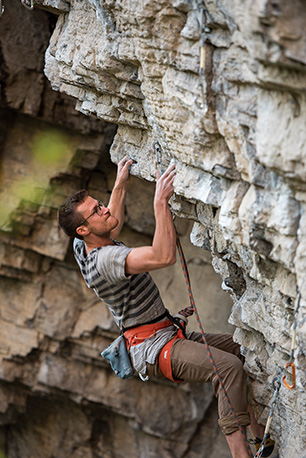
O/B: What are three physical drills you have athletes do? What are three drills non-climbers could do to improve their scrambling skills in the mountains?
PF: I love technique drills. I come from a music background, so the idea of repeating a route or boulder to near-perfection really appeals to me. Footwork, balance, and efficient movements are all essential parts of climbing technique. For these, I use three drills:
1. Sticky feet. This drill basically means placing your feet with intention. As you climb, ensure your feet land exactly where you want them to, without any additional movement. Once they’re on a hold, they’re stuck. It’s harder than it sounds!
2. Stability bouldering. To work on your balance, find a boulder or route well below your ability level. Every time you get into a new body position while climbing, drop a hand and maintain balance between the remaining three (or two!) points of contact.
3. Perfect repeats. This drill is for working general movement and flow. Find a boulder well below your limit and record yourself climbing it. Consult the video and identify all of the extraneous movements or hesitations that waste energy. A foot pat here, an unnecessary readjustment there. Repeat this process three to four times until the problem is dialed. You should be able to flow between body positions with decisive grace.
For scrambling, any amount of training for technical climbing will help. The above drills can apply to anyone looking to improve efficiency and agility while moving through the mountains. Most people scramble on 4th or easy 5th class, so getting comfortable doing auto-belay laps at the 5.9 level will help you immensely. But in the end, for a high-complexity skill like scrambling, the best practice is to just get out there and do it in a safe environment.
 |
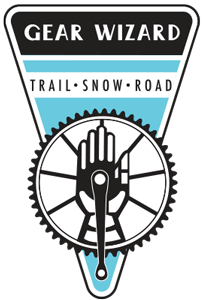 |
The CrossFit Coach
Bri Sands has been the owner and head coach at CrossFit Bozeman for six years. She came to the sport through a fellow firefighter, who introduced her to the WOD (Workout Of the Day). Sands especially loves helping athletes get their first kipping pull-up, toes-to-bar, or handstand push-up. One of her favorite sayings is, “The body achieves what the mind believes.”
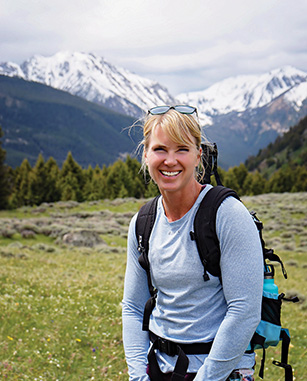
O/B: How long have you been coaching in the Bozeman area, and how many times per week do you coach?
BS: I’ve been the owner and head coach at CrossFit Bozeman for six years. Before moving back to Bozeman, I coached at CrossFit Billings for six years as well. I coach five to six days a week, on average three to four classes daily.
O/B: How would you define the athletes here in Bozeman?
BS: The athletes at our gym are training for life. Most of them come here to get better at whatever they do in the outside world, whether it be skiing, hiking, climbing, hunting, fishing, trail running, mountain biking, or just being able to keep up with their kids and grandkids. We all have different goals but we work side by side to achieve them and support and encourage each other along the way. We build relationships through fitness while having lots of fun. That’s what it’s all about: fun, friends, and fitness.
O/B: Can you name three of your favorite exercises that mountain athletes of all kinds could benefit from?
BS: It’s hard to pick just three! We constantly vary the workouts to develop cardiovascular endurance, flexibility, power, agility, balance, and accuracy. That said, here are three favorites for mountain athletes:
1. The step-up, with added load or just bodyweight. One of our favorite ways to do this is with a weighted ball held over the shoulder while alternating sides every few reps. This combines cardio endurance, strength, power, coordination, and balance. All of these physical skills transfer to a multitude or mountain activities.
2. The burpee. This is probably my all-time favorite—and our athletes’ least favorite—exercise. But the burpee is awesome because it can be done anywhere, anytime, with no equipment, and it’s highly functional. For a quick and effective workout, try 100 burpees for time, pure and simple.
3. The squat-clean. This movement will give you the biggest bang for your buck. It’s a complex barbell movement, but once the technique is practiced, there is nothing better for developing explosive strength and power. The strength and power are highly transferrable, so, as you increase your strength and power through the squat clean, you will see an increase in strength, power, and performance in movements in and out of the gym.
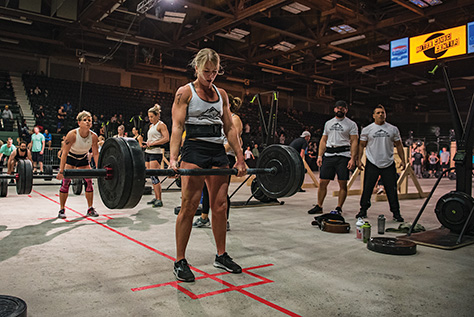
O/B: I’ve heard from my PT that Bozeman athletes tend to have overdeveloped quads and underdeveloped glutes. “Cowboy butt,” in other words. Is this something you’ve seen? Do you have a favorite glute workout?
BS: We see a bit of this. I don’t have a specific glute workout, but I do have two favorite glute exercises. Remember, good form is key.
1. Single-leg Romanian deadlifts. A traditional barbell lift which helps develop posterior chain strength and also improves balance and hip mobility. Stand on one leg while holding a barbell, one or two dumbbells or kettlebells, or a sandbag. Ground your heel, lower your torso until it’s nearly parallel to the floor, then slowly return to vertical. Remember to hinge at your hips as you keep your spine long.
2. Single-leg glute bridges. This is a variation of the barbell hip thrust, which uses hip extension as well as recruiting glute and core muscles. Lie on your back with your knees bent and your feet shoulder-width apart. Lift one leg up, so that the sole of your foot is aimed toward the ceiling with the foot flexed. While keeping your upper back on the ground, use your glutes to raise your hips off the ground. Your knee, hips, and shoulders should form a straight line, and your core should be engaged. Pause at the top, squeeze your glutes, and lower back to the ground.
O/B: What’s your favorite thing about CrossFit?
BS: The best thing about CrossFit is its universal scalability: the workout can be modified to meet your goals no matter what your fitness level or age. The workout is different every day, because routine is the enemy. We strive for constantly varied, functional movement, executed at high intensity—this is where the magic happens.
What impresses me the most is being able to witness athletes build their confidence one rep, one workout, and one day at a time. With that confidence comes strength: physically, emotionally, and mentally. I love seeing this happen. You can tell when an athlete realizes that they can do more today than they could yesterday—nothing’s more powerful and inspiring to witness. This motivates me to do what I do, every day.

